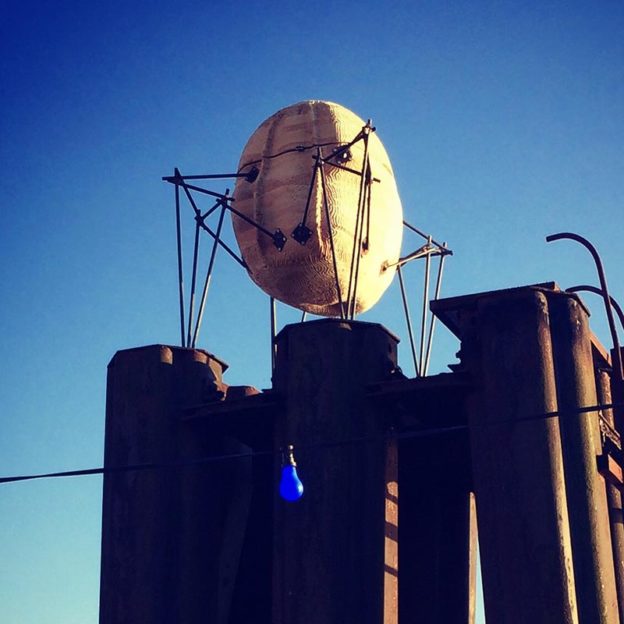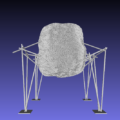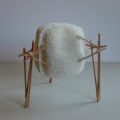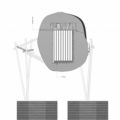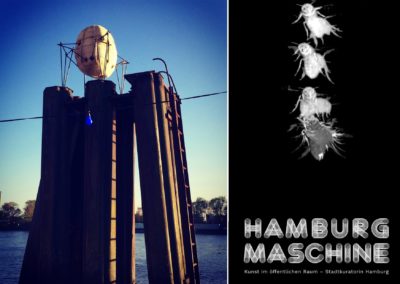In April 2018, Dirck Möllmann was appointed as the new independent city curator of Hamburg. His program Hamburg Maschine (Hamburg Machine) brings together individual artistic positions, art activism, and discursive elements that establish a tangible and accessible artistic practice. By drawing on the history of public art, the program will open up new paths for urban art in Hamburg.
Why should Hamburg be called a machine? In the twentieth century, the current city was a representative stage, a productive factory, a planned infrastructure, a built physicality, and a social reality, sustained by a political community. This has not changed, yet the city has been radically transformed by the current cybernetic epoch. In this transition from an industrial to a machinist and socio-technological system, what will become of the urban structures in place? What functions can a future art for and in public space have? And, what meaning will art obtain in this society?
https://stadtkuratorin-hamburg.de/en/

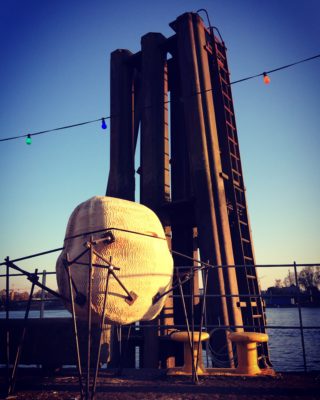
The Golden Pavillion, Entenwerter an die Elbe. The Pavillion will be hosting the exhibition on the ElbBienen project.


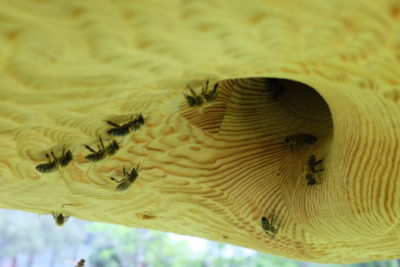
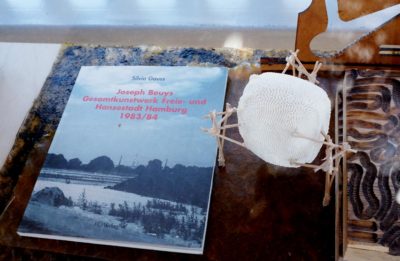

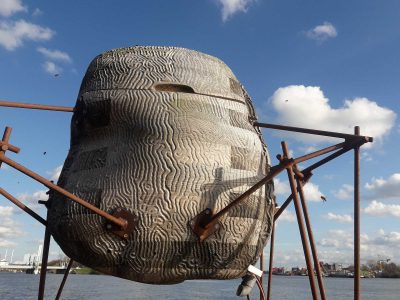
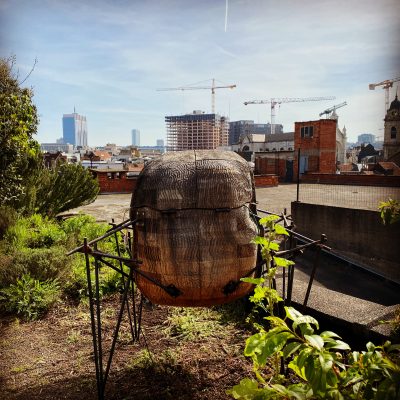
ElbBienen: ein Dialog zwischen Elbe Bienen und Brüsseler Bienen
Die Elbbienen-Projekte überwachen die Entwicklung von zwei Bienenvölkern: die Bienen im Brüsseler städtischen Bee Lab (BuBL) und die Bienenkolonie im Entenwerder Park in Hamburg. (initial installation in Brussels and Hamburg, April 2019).
Concerning the intention of the city curator’s program Hamburg Maschine to make a complex city feasible and graspable as a machinical texture, the work of AnneMarie Maes fits perfectly. She visualizes and exemplifies these big questions, and gives them an artistic materiality enhanced by modern technology. Her work makes abstract thinking sensible and perceptible for the public with a high artistic quality in order to create a place for discussion, contemplation and reflection of socio-technological issues. ElbBienen is a research project on the edge of art and science. It evokes issues of sustainability and biodiversity, giving viewers an artistic experience of Annemarie Maes’ ongoing research related to the disappearance of the honeybee. The goal of the ElbBienen-beehive is a double one. On the one hand it offers a safe refuge for city honeybees, and on the other hand it is a biosensor that interacts with the environment and that measures the pollution of the foraging fields around the beehive. Therefore the ElbBienen project explores ecological aspects of digitality in the context of Hamburg Maschine, a metaphor of the city as a machine in the digital age. Animal life, especially bees, are essential for the functioning of a social community. Certain organisational forms of social collectives have been compared with the functioning of bee colonies, e. g. as Joseph Beuys did with his notorious Honigpumpe at Documenta 6 in Kassel, 1977. To connect advanced technology with a living biosystem like a beehive is an inspiring way of exploring innovative modes of interaction and interfacing between artificial machinist, classical human and instinctive animal intelligence for the future. Maes’ invention is completely new for the international art place Hamburg and (to be honest) this project is science fiction in nowadays urban reality. The project will now be realized for the first time in public space, because the topics of how to deal with the interaction of humans, machines, and animals are of significant public interest. Instead of using an art installation figuratively in order to make a pedagogic attempt to create a new consciousness, like Beuys did in 1977, time has changed and Maes steps directly into a survival topic: Humans need living bees to maintain a sustainable environment.
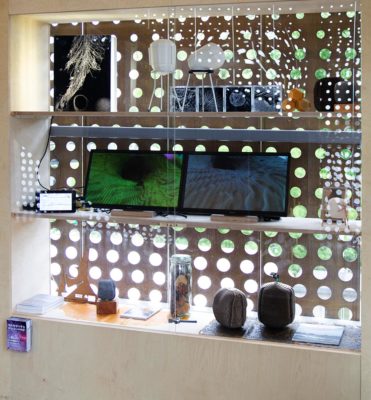
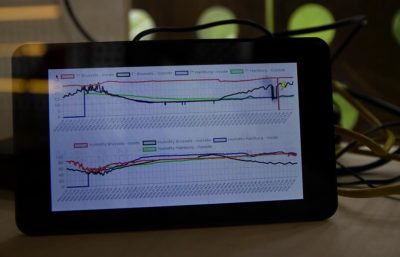
Vitrine with maquettes documenting the development of the ElbBienen project. Graphs comparising the behaviour of the beehives in Brussels and Hamburg.
The commissioned version of ElbBienen is a bio-tech installation customized for public space in Hamburg. The ElbBienen-beehive will be populated with a living bee colony and the beehive will be installed on top of a pile mooring in the Elbe river at the Entenwerder Golden Pavilion. The beehive will remain on the spot for at least 1 bee-season (up to 16 months). The Golden Pavilion itself is an architectural artwork from the internationally acknowledged outdoor-exhibtion Skulptur Projekte in Münster, 2007. The transfer was made possible with public and private fundings. The new location in Hamburg is a place to be for visitors of the harbour, and stands in close view of the famous Elbphilharmonie at the river banks. There is a café visited by thousands of people during the year, even in winter times many visitors and ramblers are passing by. The location is ideal for the beehive-sculpture, because it will be noticed by a wide range of people besides the usual art-lovers. The ElbBienen project delivers new interfaces, some of them given form by sculptural handling with digital machines, for the needs of bees at the Elbe river-location. The production of the beehive will be realized in cooperation with the robotic woodcraft laboratory of Die Angewannte, Vienna.
3D drawings and physical models for the Intelligent Guerrilla Beehive / ElbBienen sculpture in Hamburg, 2019
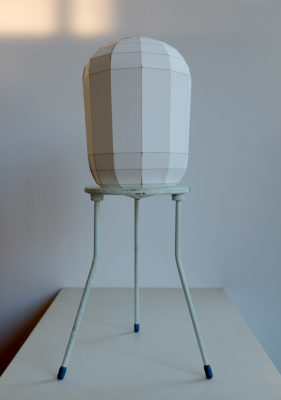

3D drawings and physical models for the Intelligent Guerrilla Beehive / ElbBienen sculpture in Hamburg, 2019
For the first time in Maes’ career, and after more than ten years of artistic and proto-scientific research towards an organic beehive equipped with monitoring systems and enhanced with artificial intelligence, the outcome of this research will be presented in the urban public space. This is a big step for the artist insofar she addresses a much wider public, and she switches lab conditions for a natural environment in urban space.
Maes already observed the behaviour of a bee colony monitored with cameras, microphones and sensors in the protected conditions of her outdoor laboratory on the rooftop of her studio. In Hamburg, at the chosen location Entenwerder, the images of these observations will be streamed to flatscreens that are placed in the exhibition space of the Golden Pavilion. Artefacts, models and material studies relating to the different phases of research and development of the installation will be on show. As such, the public will be informed on the complexity of the installation. And moreover than displaying the local bee colony information, the flatscreens in the exhibition will also stream realtime images from a similar beehive in Brussels. As such the artist creates a juxtaposition of urban ecosystems in 2 European cities (Brussels and Hamburg), and these ecosystems are visualised and rendered by the behaviour of the 2 bee colonies. All this information can be witnessed by the public on site but also online. The sounds and images, as well as the sensordata collected in the urban environments around the beehives, will be visible in realtime on a webpage dedicated to the project.
Exploring a different digitality. Text by media-theorist Oliver Leistert, as preparation for the book publication on the Hamburg Maschine project:
Hamburg Maschine Buch_englisch
The Hamburg Machine in Positionen, Art in Public Space:
Positionen
Short interview on the ElbeBienen project for the Hamburg NRD90,3 radiostation, by Franziska Storch from Saloon Hamburg (20 07 2020):
NL
Dirck Möllman, stadscurator van Hamburg, nodigt Anne-Marie Maes uit om met haar werk “ElbBienen” deel uit te maken van het culturele stadsprogramma “Hamburg Maschine”. ElbBienen is een onderzoeksproject op de rand van kunst en wetenschap, en gaat over het verdwijnen van de honingbij. Een sculptuur die dienst doet als bijenkorf zal bevolkt worden door een kolonie levende bijen en wordt geplaatst ter hoogte van het Gouden paviljoen aan de rivier Elbe. De korf zal minstens 1 bijenseizoen lang blijven staan (16 maanden). Beelden vanuit de bijenkorf, net als uit een gelijkaardige korf in Brussel, zullen vertoond worden op flatscreens in de expositieruimte van het Gouden Paviljoen. Daarnaast zullen ook voorwerpen, modellen en materiaalstudies die verband houden met alle fasen van het onderzoek getoond worden. De beelden zijn ook online te bekijken.
De productie van de sculptuur zal in Wenen plaatsvinden in februari 2019, waarna in april alles zal opgebouwd worden in Hamburg. de tentoonstelling wordt geopend in mei 2019. De expo wordt aangevuld met gegidste rondleidingen met educatief karakter en zal ook scholengroepen ontvangen.
Na meer dan 10 jaar van artistiek en wetenschappelijk onderzoek door de kunstenares, zal dit de eerste keer zijn dat het resultaat ervan zal tentoongesteld worden in de publieke ruimte. Hierdoor wordt een veel breder publiek bereikt. De tentoonstellingsruimte in het Gouden paviljoen is een “place to be” in Hamburg voor bezoekers uit de omgeving en voor internationale bezoekers. Zowel in de winter als in de zomer komen duizenden bezoekers langs. De locatie van de sculptuur is bovendien ideaal gelegen om ook vele niet-kunstkijkers te bereiken die de mooi gelegen locatie bezoeken.
